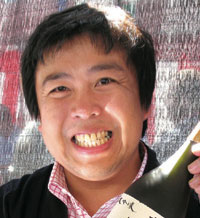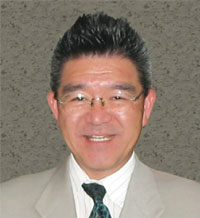
By Kosuke Kuji
Sake breweries in Japan incurred major damage from the coronavirus outbreak.
The greatest blow was from restaurants forced to cease operations due to the initial state of emergency declaration. Although more consumers started to consume sake at home, consumption levels at home did not compare to sake consumed in restaurants. Sake not consumed in restaurants dramatically reduced opportunities for sake consumption overall.
In the Japanese sake industry, the dramatic drop in sales of sake sold in magnum bottles (1.8 litres) still has not recovered to pre-pandemic volumes.
Most sake in magnum bottles are sold to restaurants, purchased to sell sake “by the cup.” Opportunities to consume sake in restaurants still haven’t fully recovered to pre-pandemic levels. Therefore, 720 ml sake bottles (smaller than magnum bottles) are sufficient to meet the needs of restaurants, evidenced in the significant increase in production volume of 720 ml bottles since the coronavirus outbreak.
Restaurants may have seen magnum sake bottles as more “economical” than 720 ml bottles before the pandemic. However, more restaurants increased their inventory of 720 ml bottles in their refrigerators since the coronavirus pandemic to maintain sake quality and offer samples of various sake brands.
Since this shift in size was noted since the coronavirus pandemic, the magnum bottle may quickly become obsolete in the future.
The most common size to export sake overseas was 720 ml since the beginning. Therefore, Japanese sake breweries may start to focus on 720 ml bottles in the future.
Quality is more easily managed in a smaller bottle. Hopefully, this change since the coronavirus pandemic will inspire favorable change in both directions.
酒豪大陸「コロナ後の酒蔵」
コロナの流行により、酒蔵も大きなダメージを受けました。
一番大きかったのは、最初の緊急事態宣言による飲食店さんが営業できなくなったことです。
もちろん、その分、家で飲む方も増えたのですが、やはり飲食店さんで飲む酒は別物で、それが無くなる事で飲酒の機会が圧倒的に減りました。
私達の日本酒業界で言うと、一升瓶の売り上げが激減して、今でも一升瓶の売り上げはコロナ前には全く戻りません。
一升瓶はそのほとんどが飲食店さんで「1杯売り」で使われていると思われ、コロナで飲食店さんでの飲酒の機会がまだ完全に戻らないことと、一升瓶ほど大きくなくても720mlの瓶でも十分にやっていけると飲食店さんが理解して、逆に720ml瓶の生産量はコロナ前よりもかなり増えています。
720mlよりも一升瓶のほうが「お得」と飲食店さんはコロナ前までは考えていたと思いますが、品質維持やたくさんの銘柄を試せる事もあり、コロナ後は飲食店さんの冷蔵庫にも720mlがとても増えました。
蔵元もそれを意識して、一升瓶を廃止した蔵もあります。
コロナというきっかけがあったからこそ気づけたところもあり、これからは加速度的に一升瓶というサイズの瓶は無くなっていくでしょう。
輸出では最初から720ml瓶が主流でしたので、そこをこれからは日本の蔵元は主流に考えていく時代になるでしょう。
その分、品質管理も良くなりますし、お互いに良い方向にコロナ後に行ければうれしいです。

Consumption of Nada sake in Edo
Nada ward first emerged in historical documentation as “Nadame, Ports of the Nada Region,” a supplier of sake to Edo (the capital, modern-day Tokyo) in the “Examination of the Records of Vendors Handling Sake to Edo City” from 1724. Afterwards, the vendors grew into an organization that shipped sake from twelve nearby regions to Edo by the late 18th century. After a law was promulgated to encourage the purchase of sake rice as a measure to ease the drop in the price of rice was promulgated in 1806, the vendors played an even greater role in the distribution of sake afterwards.
The volume of sake transported to Edo reached 665,000 barrels by 1822.
The top reason why “Nada sake” surpassed sake from Itami city and Ikeda city and dominated the Edo market due to the high quality of Nada sake. In addition, efforts focused on cold weather brewing to produce sake that suited the palate of Edo consumers was another reason, followed by consistent efforts made to improve sake brewing techniques.
The discovery of Miyamizu
Tazaemon Yamamura, founder of the distinguished sake brewery “Sakura-masamune,” said to be the mainstream (top sake brand) among sake produced in Nada ward in 1840, drew water from the “plum tree well” in Nishinomiya region. This water was transported to Uozaki Sake Breweries and used as brewing water. Due to the quality sake that resulted from this water, “miyamizu” - quality water suitable to brew sake - became highly valued among sake brewers of Nada ward, who competed against others to use miyamizu as brewing water. Miyamizu is high in phosphate and potassium, aids the growth of yeast and malt, and vigorous fermentation.
灘酒の江戸入津
江戸積酒産地として灘郷が登場したのは、享保9年(1724)の「江戸下り問屋調査」にある「灘目(なだめ)」が最初。以後18世紀後半には「江戸積摂泉十二郷」(えどづみせっせんじゅうにごう)の中心となるまでに発展し、文化3年(1806) の米価の下落を緩和する措置として酒造家に対して酒造米の買い上げを奨励した「勝手造り令」公布以降はさらに大きな飛躍をとげた。
文政5年(1822) には江戸入津(にゅうしん)量は、実に66万5千樽(230,000石)にも達した。
このように「灘酒」が、伊丹、池田を追い越して江戸の市場を独占した理由の第一は、酒質の良さだが、江戸の消費者の好む酒を造るために灘をあげて寒造りに集中し、常に技術の改良に心掛けたからでもある。
宮水の発見
天保11年(1840) 灘の本流といわれる名門蔵「櫻正宗」の祖、山邑太左衛門(やまむらたざえもん)が、西宮の「梅の木井戸」の水を魚崎の蔵に運び仕込み水として用い,優秀な酒を醸造したことから「宮水」(みやみず)の評価が高まり、灘の酒造家は競って仕込水に「宮水」を使用した。宮水とは、酒造りに適した上質な水のこと。この宮水にはリン酸塩やカリウムが多く含まれており、酵母や麹の繁殖を助けて発酵を盛んにする働きがある。

By Ryuji Takahashi
Since discovering the named Honshu-Ichi from Hiroshima prefecture last fall, I was moved by the flavor and wished to visit the brewery. I finally visited Umeda Shuzo-jo Brewery in Funakoshi town, Aki ward of Hiroshima prefecture. Founded in 1916, Umeda Shuzo-jo Brewery draws water flowing 60 meters underground from the Iwataki Mountain, used as mother water. Sake ingredients used are all produced in Hiroshima prefecture. Recently, Umeda Shuzo-jo Brewery has been garnering attention since winning a Japanese sake competition in Europe.
First, I headed to Hiroshima Station on a shinkansen (bullet train), transferred to the Sanyo Main Line, and reached the Kaitaichi Station. From there, I drove approximately five minutes north along the river and arrived at the Umeda Shuzo-jo Brewery. Hiyama-san, the second son of this family-owned brewery who works as a brewery worker, led me on a tour of the brewery. Hiyama-san returned home to the brewery two years ago to produce sake during the winter, and sell sake in the Kanto region and surrounding areas during the summer. Umeda Shuzo-jo Brewery preserves the traditional sake flavor while introducing sake with notable aroma as main products for consumers from other prefectures and overseas.
Currently, brand recognition is low outside of Hiroshima along with the low production volume. However, I’m convinced this sake brewery will one day captivate the attention of a sake connoisseur and become a popular brand. Their product concept, attentive sake production, and the character of each brewery worker are each reasons that prompt encouragement for the brewery’s success. I look forward to seeing this brewery grow into a global brand. While visiting the Chugoku region, I decided to revisit Ichinomiya Sake Brewing Company in Oda city, Shimane prefecture; for the first time in seven years.
I headed north from my parents’ home in Fukuyama city, Hiroshima prefecture to Oda city, Shimane prefecture. The halfway point is the Chugoku Mountains, with the possibility of snow. I frequently checked the weather report as I continued north, but eventually encountered snowfall. Luckily, snow did not accumulate, and I arrived safely in Shimane prefecture.
The weather was sunny in Shimane prefecture. I drove along the scenic coast, taking in the beautiful and vast Sea of Japan until I arrived at the Ichinomiya Sake Brewing Company. The Master sake brewer and his wife were as healthy as ever. I enjoyed a lengthy discussion with them about new ideas and strategies to sell their current inventory of sake and create an exciting future for their sake brewery. Their passionate thoughts and efforts recharged my own motivation as well. I toured the brewery for the first time in seven years. The interior was considerably remodeled and cleaner since my last visit.
Both Umeda Shuzo-jo Brewery in Hiroshima prefecture and Ichinomiya Sake Brewing Company in Shimane prefecture cherish tradition, reconsider customs that pose a negative effect, hire young workers to brew sake, and continue to evolve their passion and efforts to pass on their respective sake brands onto the next generation. Motivated from my visit to two breweries in the Chugoku region during my brief stay of two nights and a wake-up, I concluded my trip by gazing at the 400-year-old Fukuyama Castle from the bullet train on my way home.
東京地酒散歩(中国地方放浪記)
広島の本洲一という酒に昨年の秋出会い、衝撃を受けて是非酒蔵に挨拶に行きたいと思い、広島県広島市安芸区にある梅田酒造場を訪ねてみた。この梅田酒造、創業は大正5年1916年で岩滝山という岩山から流れる伏流水を地下60メートルから汲み上げて仕込み水に使っているとのこと。原料は広島産の物に拘り、近年、ヨーロッパの日本酒コンテストで賞を取り評価を上げている酒蔵である。まず新幹線で広島駅まで行き、山陽本線に乗り換え海田市駅まで向かう。そこから車で5分程川沿いを北に走ると、梅田酒造場がある。蔵の次男でもある蔵人の檜山さんが蔵の中を案内してくれた。檜山さんは2年前から実家の酒蔵に戻り冬場は酒造り、夏場は関東を中心に営業活動をしている。梅田酒造場は昔ながらの味は残しつつ、現在は香りのハッキリとした県外や海外の人にもわかりやすい酒をメインの商品としているそうだ。今は、広島以外の知名度は薄く少量生産の蔵だがいずれ日本酒愛好家の目にとまり、人気銘柄として名前が出てくることが十分期待できる酒蔵の一つと言えるだろう。アイデアや真面目な酒造り、蔵人の人柄の全てが応援したくなる要素でいっぱいな酒蔵なので、是非世界に名を轟かせる酒蔵に成長して欲しい。そして折角、中国地方に来たのだからと翌日、島根県大田市の酒蔵、一宮酒造に7年ぶりに行こうと決めた。広島県福山市の実家から車で北上すると島根県大田市に着くのだが、中国山脈が途中に有り、ちょうど中間地点で雪の降る可能性が有る為、天気予報を慎重に確認しながら、自動車道を北上するも、やはり途中で雪が降っていたが積もるほどではなく、無事島根県に到着。島根は快晴で雄大で美しい日本海を眺めながら最高の海沿いドライブし、一宮酒造に到着。相変わらず元気な杜氏の若夫婦が対応してくれて久々にじっくり話をすることが出来た。新たな試みや現在の酒をどうするかなど、今後の酒蔵を盛り上げていく為の施策を若い夫婦が一生懸命考えながら頑張っている姿にこちらも元気をもらえた気がした。7年ぶりの酒蔵の中も見せてもらったが、当時よりかなり改装されており、以前よりも綺麗になっている気がした。広島の梅田酒造場も島根の一宮酒造も共通していることは、伝統を大事にしつつ、マイナスに繋がる古い慣習は見直し、若いパワーで酒造りを行い、まだまだ進化し、銘柄を次の世代に残していこうとしている行動と情熱だろう。そして2蔵に元気を貰い、2泊3日の中国地方巡りを築城400年の福山城を新幹線から眺めながら終えた。

By Yuji Matsumoto
Conventional sake seminars (for the general public and businesses) were often about the brewing process, ingredients, and the sake categories. With this seminar, however, I skipped all of them and talked about how to recognize the taste characteristics of sake, food pairing, how to choose sake that suit your restaurant, and how to add a twist to the menu. The seminar was geared toward professionals working in the restaurant business and purchasing.
Key points:
1. Understand what is offered and/or is the best-seller at one’s own restaurant, then select matching sake
2. How to set prices, including the relationship between the average customer expense and the pricing of alcohol sold
3. Whether or not to offer popular sake brands
4. Types and brands you should focus on
5. How to create the menu; do not categorize the sake by category but by food pairing and taste, to make it easier for customers to choose
6. How to utilize and select sake samplers
7. How to utilize cocktails, and popular cocktails
8. Important items for employee training; know the taste, know how to sell by type of food ordered, do a short sales talk, know the type of rice, Sake Meter Value (SMV), and area the sake comes from
9. Differences between distilled liquor and fermented liquor, which is often not well-understood
10. Product management and its methodology
11. Way of the promotion and build relationship with businesses
I would like to recommend those in the business to revise what is being discussed so it is not too much about brewing methods and categories, and consider focusing more on content useful in helping customers to enjoy shopping for sake.
酒セミナーの開催
いままでの日本酒のセミナー(一般消費者向け、業者向け)と言えば多くの内容は“造り、原材料、特定名称”についてであった。しかし、今回試みたのは、これをまったく話さず、日本酒の味の特徴のつかみ方、食事との相性、自分の店に合った酒の選び方、メニューの工夫について講演会をした。対象は、レストラン業者や仕入れ担当の業界向けのもの。
ポイントとしては;
自分のレストランで提供してる、または売り上げの多い商品郡を把握し、それに合った日本酒の選び方
価格帯の決め方。客単価と出るアルコールの価格帯の関係
人気の日本酒をおくべきか否か?
適正な種類と重点に置く銘柄
メニューの作り方。特に特定銘柄で分けず、料理帯や味で分けることにより消費者が選びやすくするメニューつくりの方法
酒サンプラーの活用法と選び方
カクテルの活用方法と人気なカクテル
従業員トレーニングにおいて重要なこと。味を知る、食事による推薦方法、簡潔なセールストーク、メニューに記載してある純米、日本酒度、地域について理解させることなど。
意外と理解していない蒸留酒と発酵酒の違い
商品管理とその方法
プロモーションの仕方と業者との関係作り
業界の皆さんも日本酒の造りや特定名称などについて偏った内容や話になっていないか、本当に一般の消費者が楽しく日本酒を見つける方法に役立つ内容を検討してはどうだろう。
- ブログルメンバーの方は下記のページからログインをお願いいたします。
ログイン
- まだブログルのメンバーでない方は下記のページから登録をお願いいたします。
新規ユーザー登録へ




